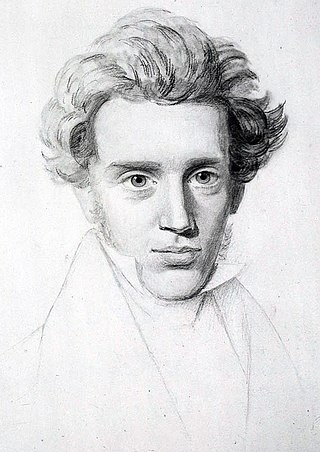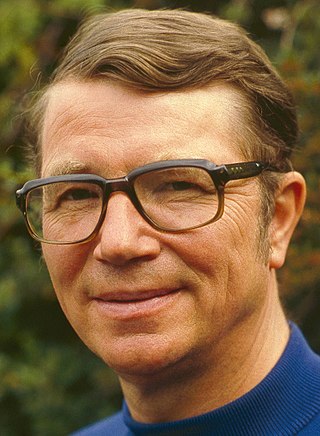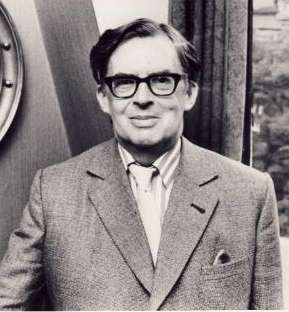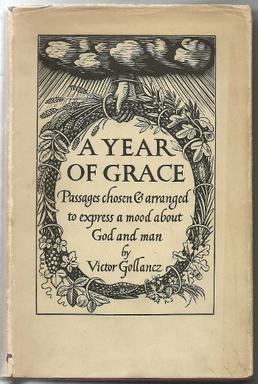
Existentialism is a form of philosophical inquiry that explores the issue of human existence. Existentialist philosophers explore questions related to the meaning, purpose, and value of human existence. Common concepts in existentialist thought include existential crisis, dread, and anxiety in the face of an absurd world and free will, as well as authenticity, courage, and virtue.

Fyodor Mikhailovich Dostoevsky, sometimes transliterated as Dostoyevsky, was a Russian novelist, short story writer, essayist and journalist. Numerous literary critics regard him as one of the greatest novelists in all of world literature, as many of his works are considered highly influential masterpieces.

Hermann Karl Hesse was a German-Swiss poet, novelist, and painter. His best-known works include Demian, Steppenwolf, Siddhartha, and The Glass Bead Game, each of which explores an individual's search for authenticity, self-knowledge, and spirituality. In 1946, he received the Nobel Prize in Literature.

Søren Aabye Kierkegaard was a Danish theologian, philosopher, poet, social critic, and religious author who is widely considered to be the first existentialist philosopher. He wrote critical texts on organized religion, Christianity, morality, ethics, psychology, and the philosophy of religion, displaying a fondness for metaphor, irony, and parables. Much of his philosophical work deals with the issues of how one lives as a "single individual", giving priority to concrete human reality over abstract thinking and highlighting the importance of personal choice and commitment. He was against literary critics who defined idealist intellectuals and philosophers of his time, and thought that Swedenborg, Hegel, Fichte, Schelling, Schlegel, and Hans Christian Andersen were all "understood" far too quickly by "scholars."

The Stranger, also published in English as The Outsider, is a 1942 novella written by French author Albert Camus. The first of Camus's novels published in his lifetime, the story follows Meursault, an indifferent settler in French Algeria, who, weeks after his mother's funeral, kills an unnamed Arab man in Algiers. The story is divided into two parts, presenting Meursault's first-person narrative before and after the killing.

Simone Lucie Ernestine Marie Bertrand de Beauvoir was a French existentialist philosopher, writer, social theorist, and feminist activist. Though she did not consider herself a philosopher, nor was she considered one at the time of her death, she had a significant influence on both feminist existentialism and feminist theory.

Colin Henry Wilson was an English existentialist philosopher-novelist. He also wrote widely on true crime, mysticism and the paranormal, eventually writing more than a hundred books. Wilson called his philosophy "new existentialism" or "phenomenological existentialism", and maintained his life work was "that of a philosopher, and (his) purpose to create a new and optimistic existentialism".

Existentialism Is a Humanism is a 1946 work by the philosopher Jean-Paul Sartre, based on a lecture by the same name he gave at Club Maintenant in Paris, on 29 October 1945. In early translations, Existentialism and Humanism was the title used in the United Kingdom; the work was originally published in the United States as Existentialism, and a later translation employs the original title.

Siddhartha: An Indian novel is a 1922 novel by Hermann Hesse that deals with the spiritual journey of self-discovery of a man named Siddhartha during the time of the Gautama Buddha. The book, Hesse's ninth novel, was written in German, in a simple, lyrical style. It was published in the United States in 1951 and became influential during the 1960s. Hesse dedicated the first part of it to the French writer Romain Rolland and the second part to Wilhelm Gundert, his cousin.

Robert Fordyce Aickman was an English writer and conservationist. As a conservationist, he co-founded the Inland Waterways Association, a group which has preserved from destruction and restored England's inland canal system. As a writer, he is best known for his supernatural fiction, which he described as "strange stories".

My Belief: Essays on Life and Art is a collection of essays by Hermann Hesse. The essays, written between 1904 and 1961, were originally published in German, either individually or in various collections between 1951 and 1973. This collection in English was first published in 1974, edited by Theodore Ziolkowski.

Philosophical Fragments is a Christian philosophical work written by Danish philosopher Søren Kierkegaard in 1844. It was the second of three works written under the pseudonym Johannes Climacus; the other two were De omnibus dubitandum est in 1841 and Concluding Unscientific Postscript to Philosophical Fragments in 1846.

Hell is Henri Barbusse's second novel, written in 1908, in which the unnamed narrator spies on his fellow house guests through a peephole in his wall.
Dagobert David Runes was an immigrant publisher in the US, a philosopher and author.
Stuart Holroyd is a British writer.

Sartre's Sink is a literary pastiche in the form of a do it yourself handbook. It contains advice about how to undertake 14 common household tasks each written in the style of a famous author from history. Sartre's Sink is the second book by photographer and author Mark Crick. Excerpts have appeared in The Independent and the Evening Herald.

A Year of Grace is a 1950 anthology compiled by Victor Gollancz, consisting of passages concerning religious and spiritual life, taken from a variety of different sources.

Søren Kierkegaard was a Danish philosopher whose influence and reception varied widely and may be roughly divided into various chronological periods. Reactions were anything but uniform, and proponents of various ideologies attempted to appropriate his work quite early.
This is a bibliography of works by Colin Wilson.

Emergence from Chaos is a 1957 book by the English writer Stuart Holroyd. In the first part of the book, Holroyd discusses different types of spirituality, while in the second part—roughly two thirds of the book—these distinctions are used to analyse the works of six different poets, each of whom reacted to the issues of modernity with his own spiritual vision. The book was Holroyd's debut and is associated with the phenomenon of the Angry Young Men.

















